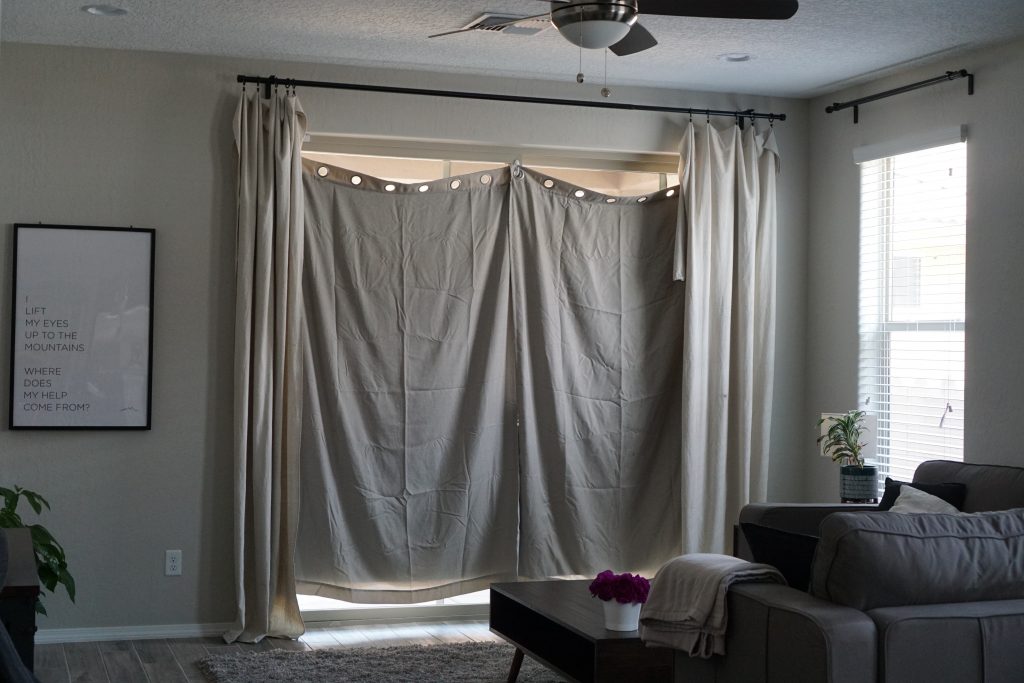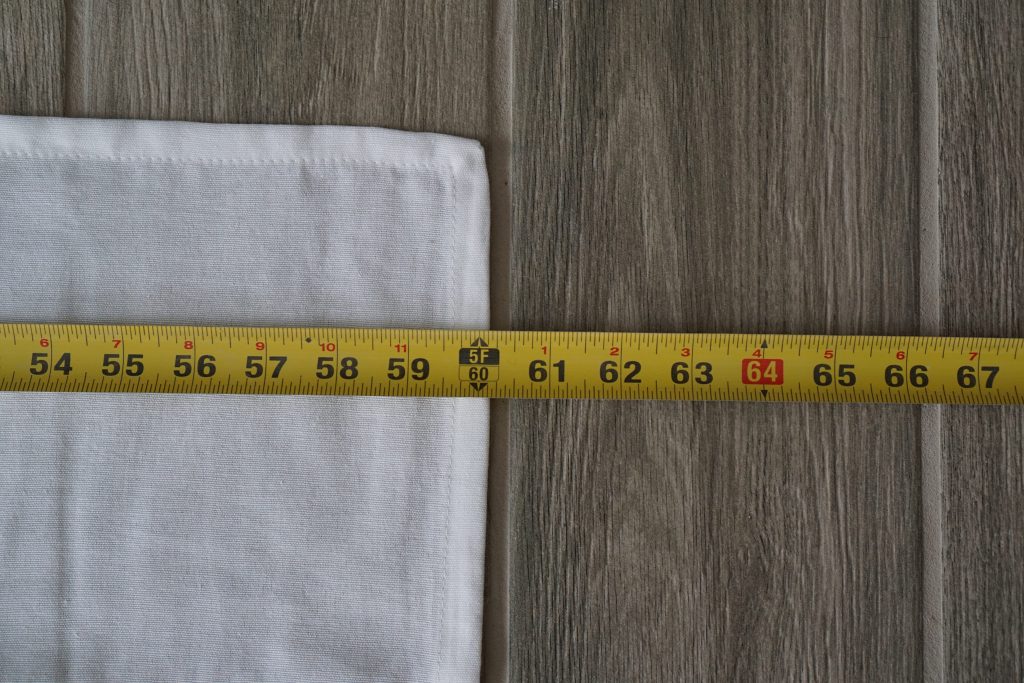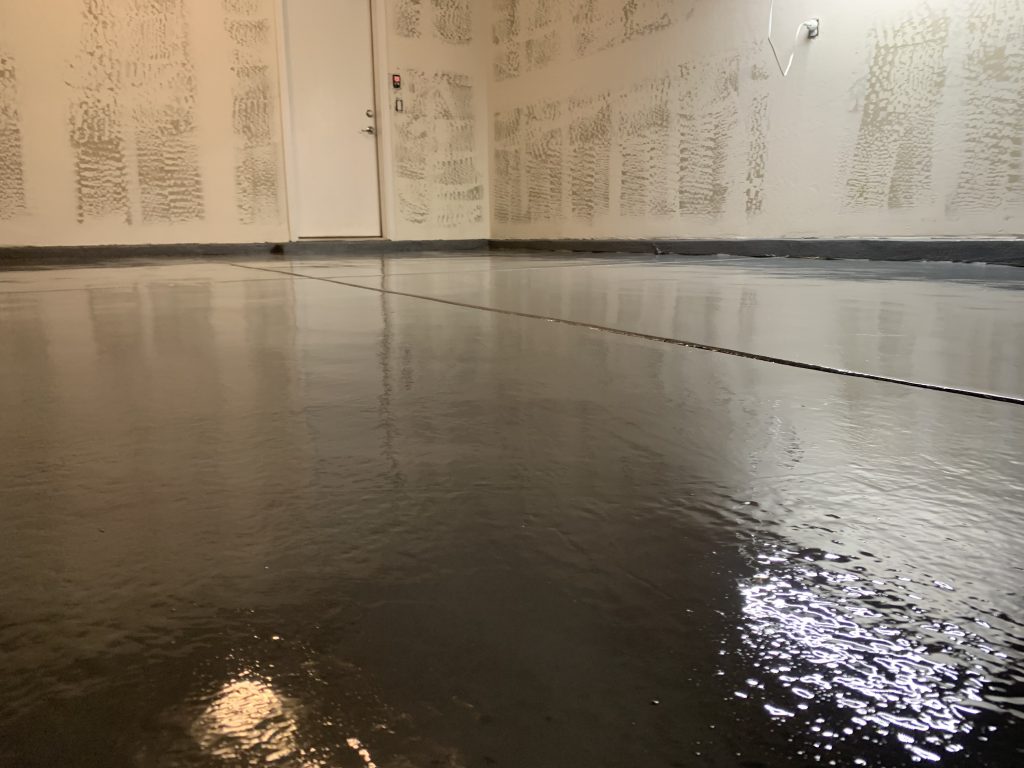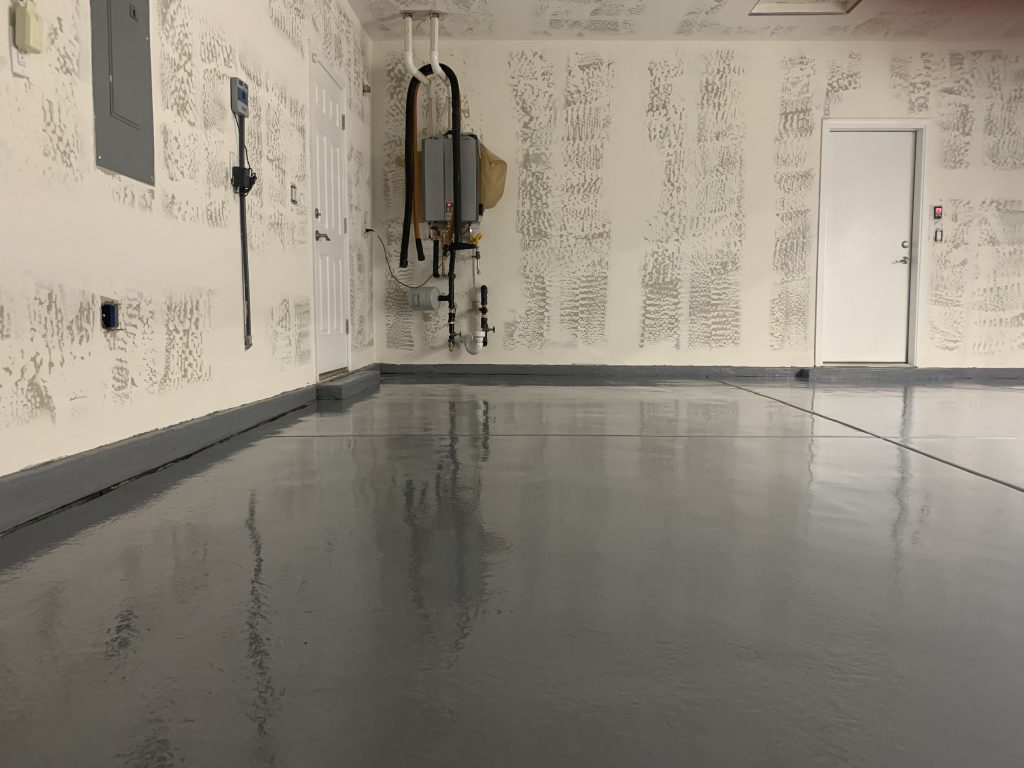Curtains, curtains, curtains. Why are you so expensive?
One of the biggest expense when you move in to a home are the window treatments. Thankfully, the windows to our home came with 2″ faux blinds, so curtains for those windows could wait. The sliding door window though, that one was left out. What are you supposed to do with sliding door windows anyway? Thaaat’s a project for another day… we needed some privacy ASAP.
In the past, I usually give up on finding long enough curtains that barely “kiss” the floor because they’re hard to find and expensive. This time, I was determined to find a better and inexpensive solution. Even if it was just for a season or until our budget allows. And, nobody wants their windows to look like they are wearing high water pants!
While I was on my quest of finding inexpensive or DIY curtains in white, we put up adhesive wall hooks and hung what we had on hand, which were a set of typical 84″ curtains.
If you’ve ever looked up DIY curtains, you are probably familiar with drop cloth curtains. I was excited to try them out. So I followed a tutorial on how to bleach and whiten curtains. Off to Harbor Freight I went. I bleached my curtains for a few hours… and they came out looking the same. Turns out, the drop cloths at Harbor Freight are not 100% cotton. The drop cloths have to be 100% cotton in order to bleach. Oh well.. I put them up anyway. But, they were too close to the color of the wall for my liking. So I left them up anyway while I found 100% cotton drop cloth.
This was our lovely setup for a few days:
Until… I was browsing around at Target and found these!
$18.99 for a white tablecloth that is 60″ x 104″. Yes please. I bought two of them.
All I needed was the curtain clip rings, which I already had.
Before I hung them up, I measured them and gave them a wash.
After a wash they did shrink about an inch in each direction. The second tablecloth was two inches shorter. In the end I was left with two panels that were 101 and 99 inches, so they don’t match exactly in length. In the future, I will probably buy the next size up, which is 120 inches long and I will hem the ends. This will make it look a lot better once they are up anyway.
I ended up leaving the drop cloth as well. I thought the added texture served this window well. I’m excited to have the rest of the curtains up. Next up, bay window curtain rods. Oy vey.

















